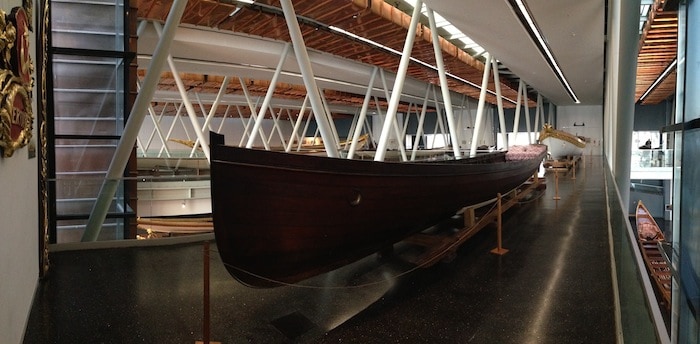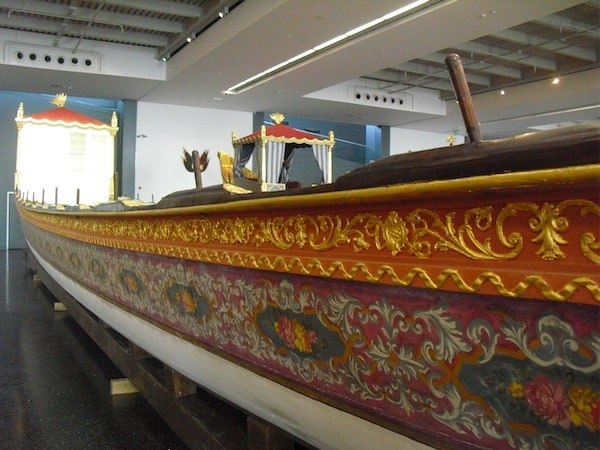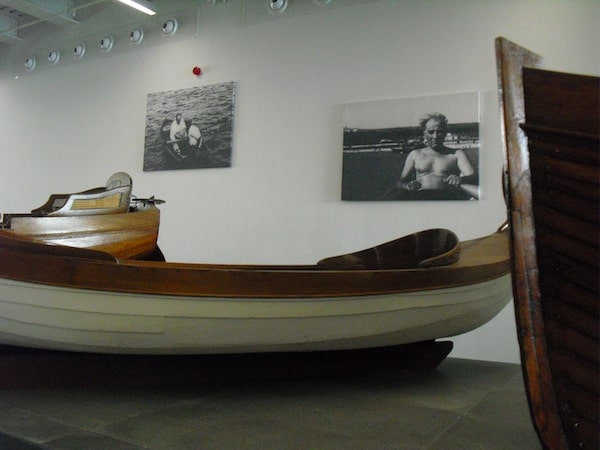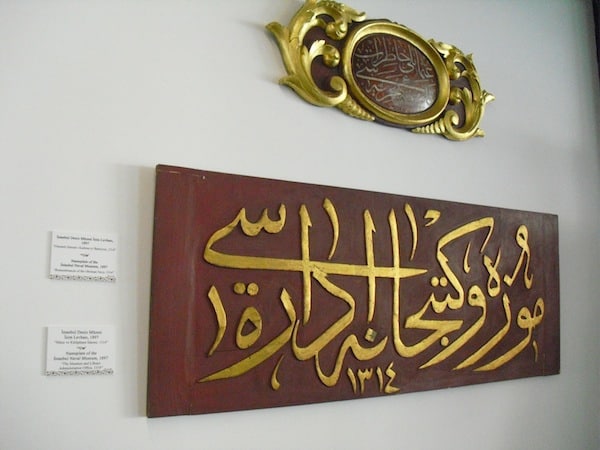The history of Ottoman achievements is defined in large measure by the empire’s relationship with the sea. For instance, some maritime episodes of note include the conquest of Constantinople in 1453, where ships were carried by land and slid over the Golden Horn, or the Battle of Lepanto in 1571, where the Holy League, a coalition of southern European Catholic maritime states defeated the main Ottoman fleet, and Cervantes, the sixteenth century Spanish poet, famously lost the use of his left arm.

Consequently, the former capital of the Ottoman Empire is a city inextricably linked with the sea. With an average of 48,000 vessels crossing the Bosphorus strait per year (more than 130 vessels daily), not to mention the constant stream of local ferries, it is one of the world’s busiest chokepoints. Therefore a proper contemporary naval museum was much needed.
The Istanbul Deniz Müzesi (Istanbul Naval Museum) is located in the central neighborhood of Beşiktas in a privileged seaside setting on the Bosphorus coast, right by the docks. The museum was designed by Teget Mimarlık as an L-shaped volume added to the existing building that housed the old facilities. The former and new museum are connected by a foyer and a glazed bridge.
The Bosphorus side holds the boat gallery, visually connecting the ships with the water. At the Beşiktas Square side, there is a courtyard that will be connected to the public space once the urbanization works are finished. The longest side is used for technical rooms and offices. Finally, the Dolmabahçe Boulevard side is where the main entrance is located, recessed from the congested street and at the end of a plaza that exhibits a huge propeller and anchor. The main façade of the museum has a massive stone cladding that serves both as roof and façade and ends on a glass plinth, giving a feeling of lightness to the building.

Inside the foyer space, there is a café and a gift shop that will delight sea enthusiasts. A collection of small-sized cannons starts at this point and continues on through the entire museum as a parallel exhibition.
Once we cross the foyer, we descend a wide staircase. On our right, we find a collection of busts of Ottoman commanderships and a small art gallery. On the left side, 3 small caïques that belonged to Ataturk are on display.
After descending the staircase the main space is revealed, making the navigation through the museum much easier. The museum is the biggest of its kind in Turkey with 20,000 square meters and 20,000 objects, and at this point, we can appreciate its vastness.
The collection of boats stand side by side facing the strait, almost like a fleet ready to plow through the seas. The first vessel, which is 40 meters long and beautifully decorated, is the oldest original galley in the world. Beside it, we find a series of imperial caïques, used by the Ottoman sultans and their suite for ceremonial and daily excursion purposes.

The ground floor is a column-free space thanks to the first-floor structure that features hanging bridges. A shallow pool on the Bosphorus façade – built to mimic the strait – is currently in progress. The exhibition space is specifically designed for these large boats: the architecture of the museum is not a shoebox than can fit every kind of exhibition but is more like a clear pencil case that reveals its content to the urban environment. The interior space is compartmentalized into open bands, each reserved for a boat. The elegant space unfolds in a rhythmic succession of structural walls covered with copper and full-height glass walls. However, at some points, the light entering through these massive panes can be overwhelmingly bright.
The materials chosen for the floor, wood, and stone, seem odd choices of low quality. At some points, the stone pavement is scratched due to the installation of the huge artifacts. Also, the wooden bands resemble a home parquet, which in turn spoils the stunning boats a bit.
At the end of the ground floor, we ascend to the first floor through a gentle ramp with models of frigates hanging on the walls. Even if they are thematically related it feels like a poor addition to fill the space. While ascending the ramp we start to have a better view of the boats and we can appreciate the details of the caïques’ upper sections, such as the kiosks used by the sultans.
The first floor consists of 7 hanging bridges made of 6-meter steel trusses that span the main hall. This structural device creates an interesting double height. We can admire the boats from an eye-level and at the same time enjoy the view from above. Though you may feel that once you have seen two or three boats, you have seen them all – there is not much surprise, just a mere repetition of the models with varying levels of ostentation. Nevertheless, space is one of the city’s architectural highlights and it’s worth walking around it.

When you get to the end of your visit of the first floor you have to retrace your steps back to the exit. This drawback will be solved in 2015 when the old building currently under restoration is set to open. Then the glazed bridge will connect both buildings, allowing a complete circle through the galleries. The space at the end of the first floor overlooking the square and the strait would have been a perfect spot for a coffee shop but it’s a missed chance.
This new naval museum doesn’t tell much of a story; it’s practically just an embellished storage facility. The building is efficient from a programmatic and architectural point of view and doesn’t seek to be more than what it needs to be: a dry dockyard. Nonetheless, a stronger sense of the maritime experience is missed. A more evocative and interactive exhibition would have allowed visitors to engage more with the long and noble history of the Ottoman fleet.
Even if the intention of this museum is modest, there could have been some attempt to integrate technology as a way to enhance the current contemplative experience. Digital technologies are currently enabling museums to foster a greater sense of interactivity by going beyond offering information and images and becoming dynamic centers of learning, creativity and enjoyment for new audiences. A contemporary naval museum without an interactive experience of the maritime world is still a great academic twentieth century museum, but not quite a twenty-first century museum.
Editor’s Note: This post was originally published in February of 2014. It was updated for relevance on December of 2018.










[…] de arquitectura contemporanea que acoge un desconocido aspecto de la historia de este imperio. En este enlace esta el articulo completo acerca de esta nueva incorporacion a la escena museistica de la ciudad, […]
Mergem si aici!
[…] on Friday’s from 1-5 p.m. It is situated next to the Istanbul Naval Museum, which features fascinating exhibits detailing Ottoman and Turkish naval history from the 1400s to the present. It includes many rare, […]